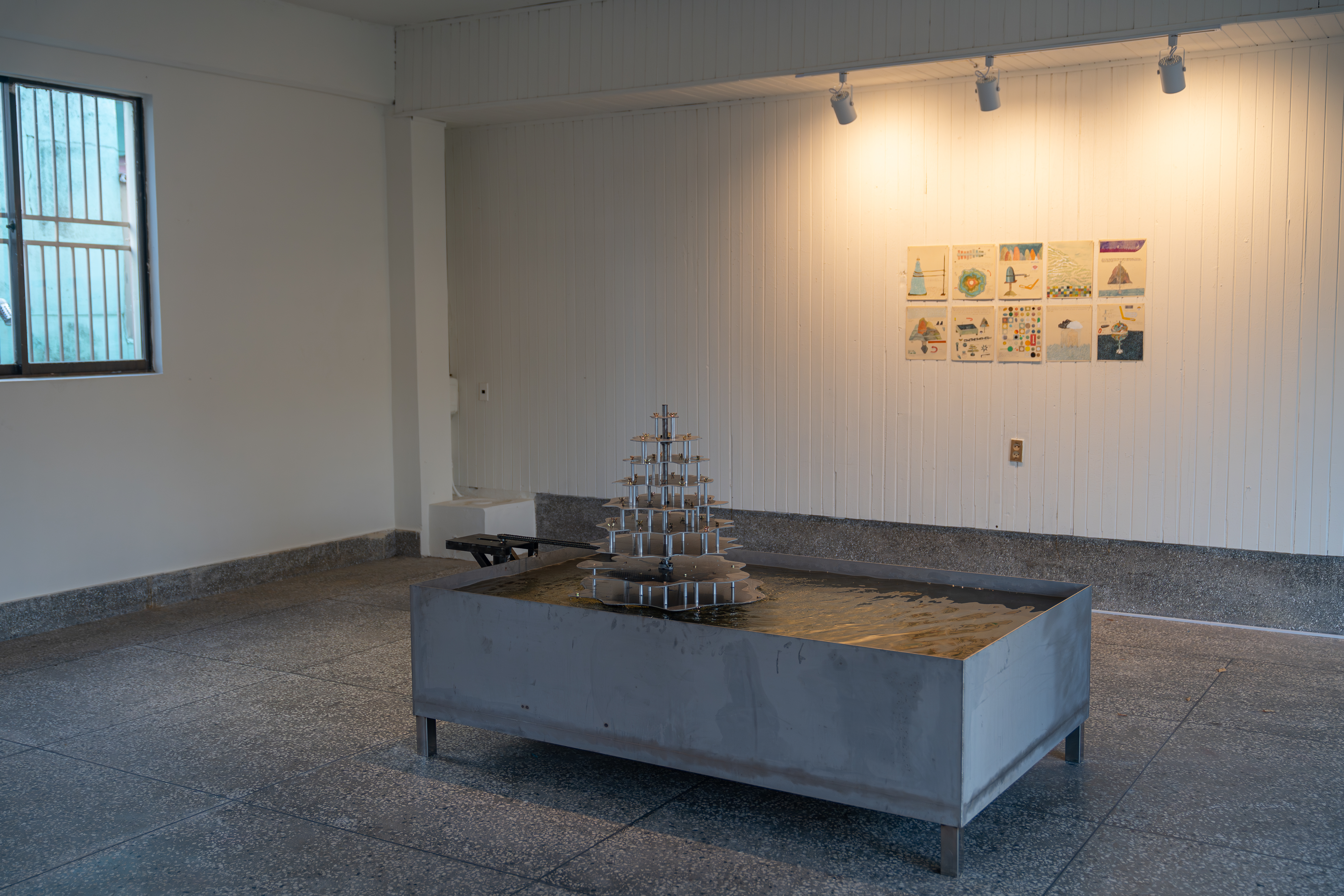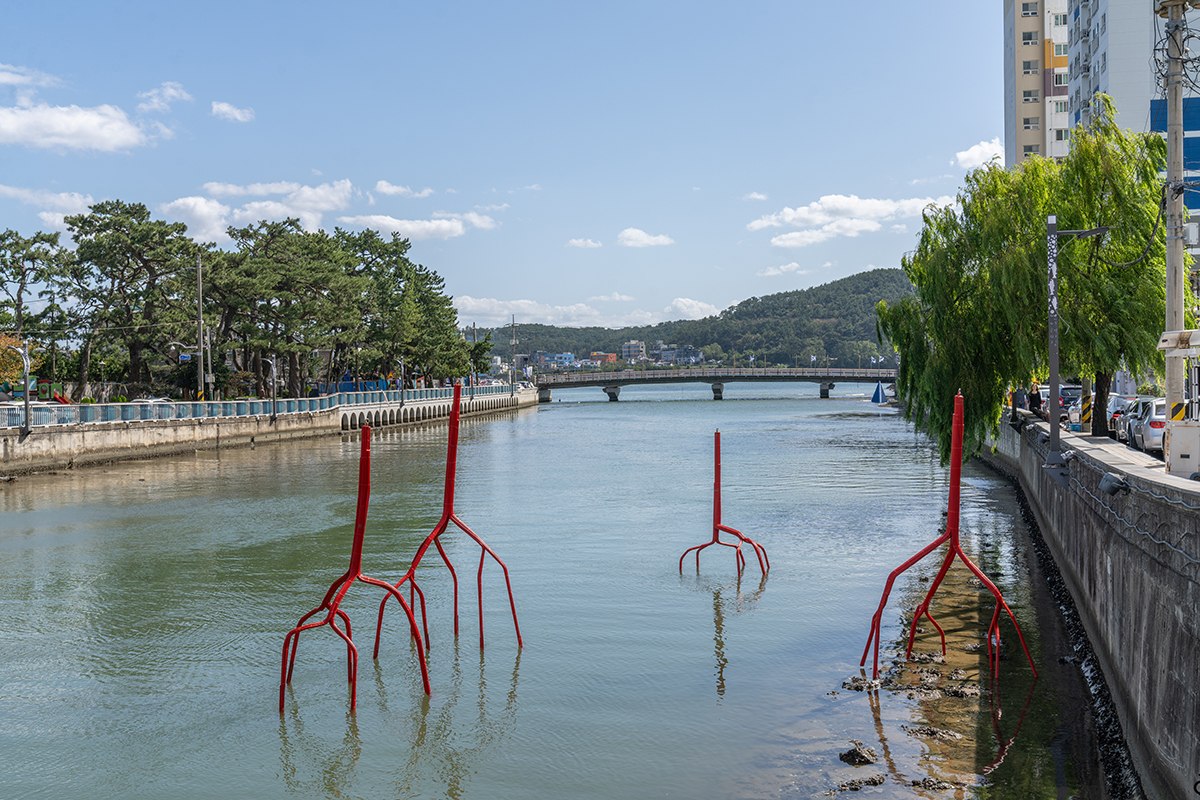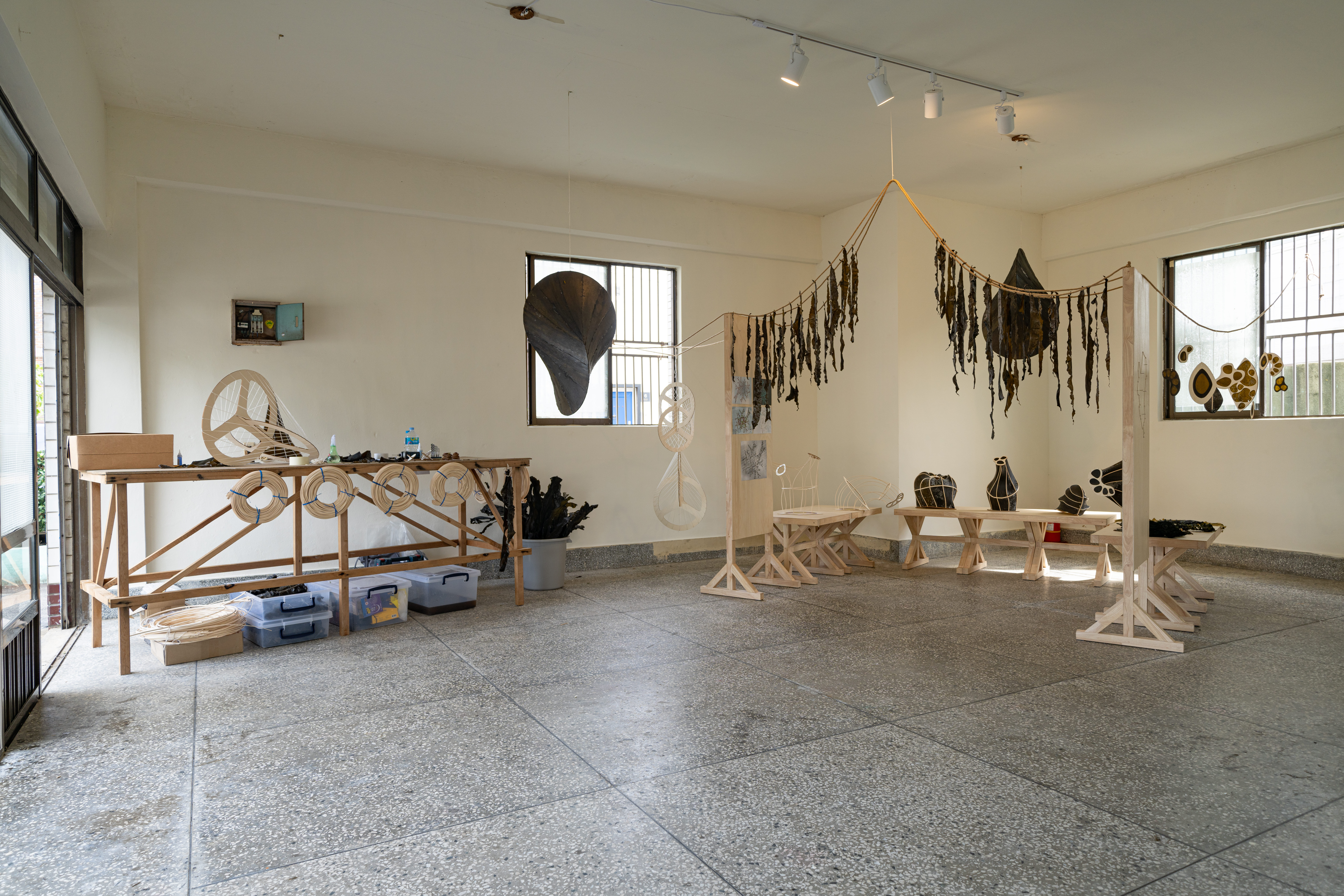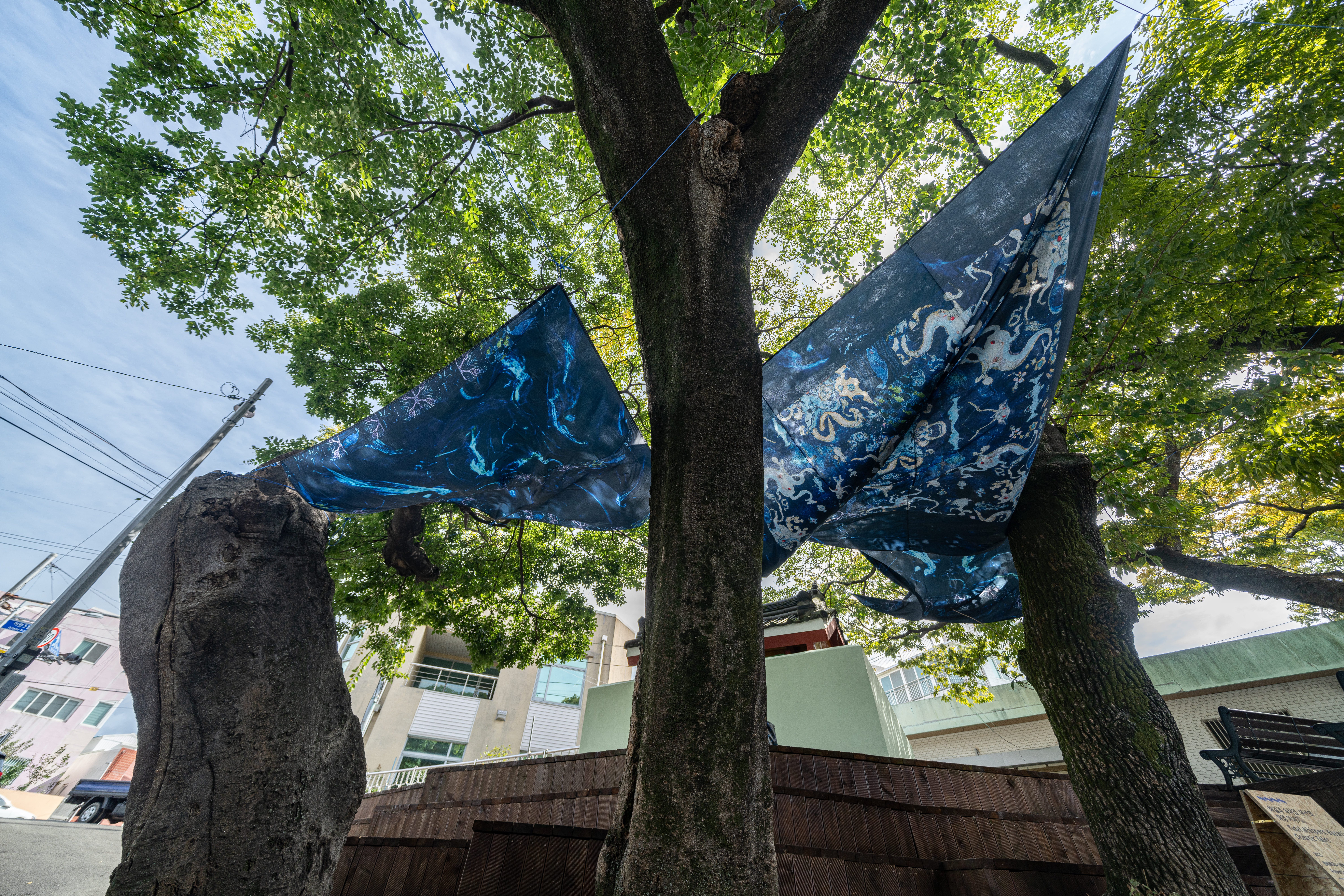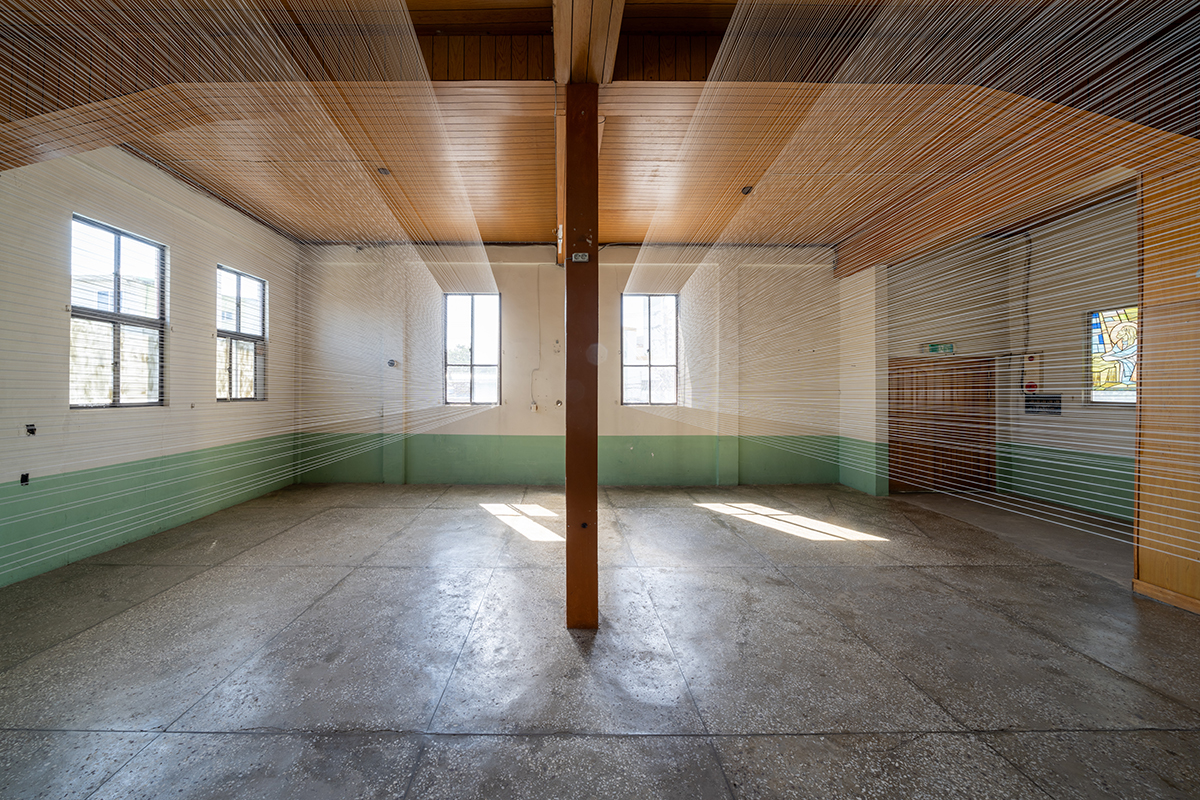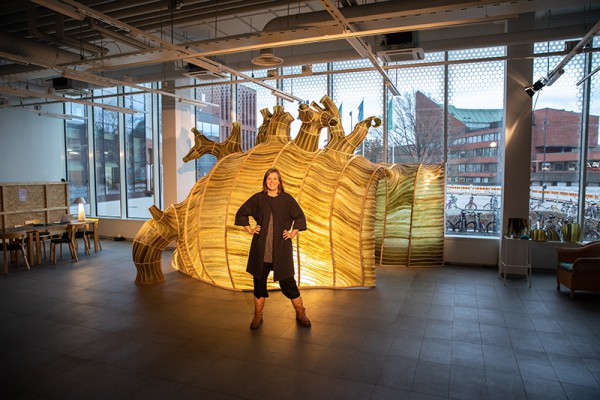Plastic Mandala: A Pattern for the Cycle of Life
2023, Mixed media, Dimension variable.
Plastic Mandala - Earth Resonance, 2023, Ocean plastic trash, Dimension variable (Circular structure: 100×100cm).
Earth-Human Resonance Pattern, 2023, Single-channel digital motion graphics, 1920×1080 pixel.
Plastic Mandala Resonance Audio-Visualizer, 2023, Sound system, computer, data collectors, 60×60×50cm.
All Commissioned by Sea Art Festival 2023.
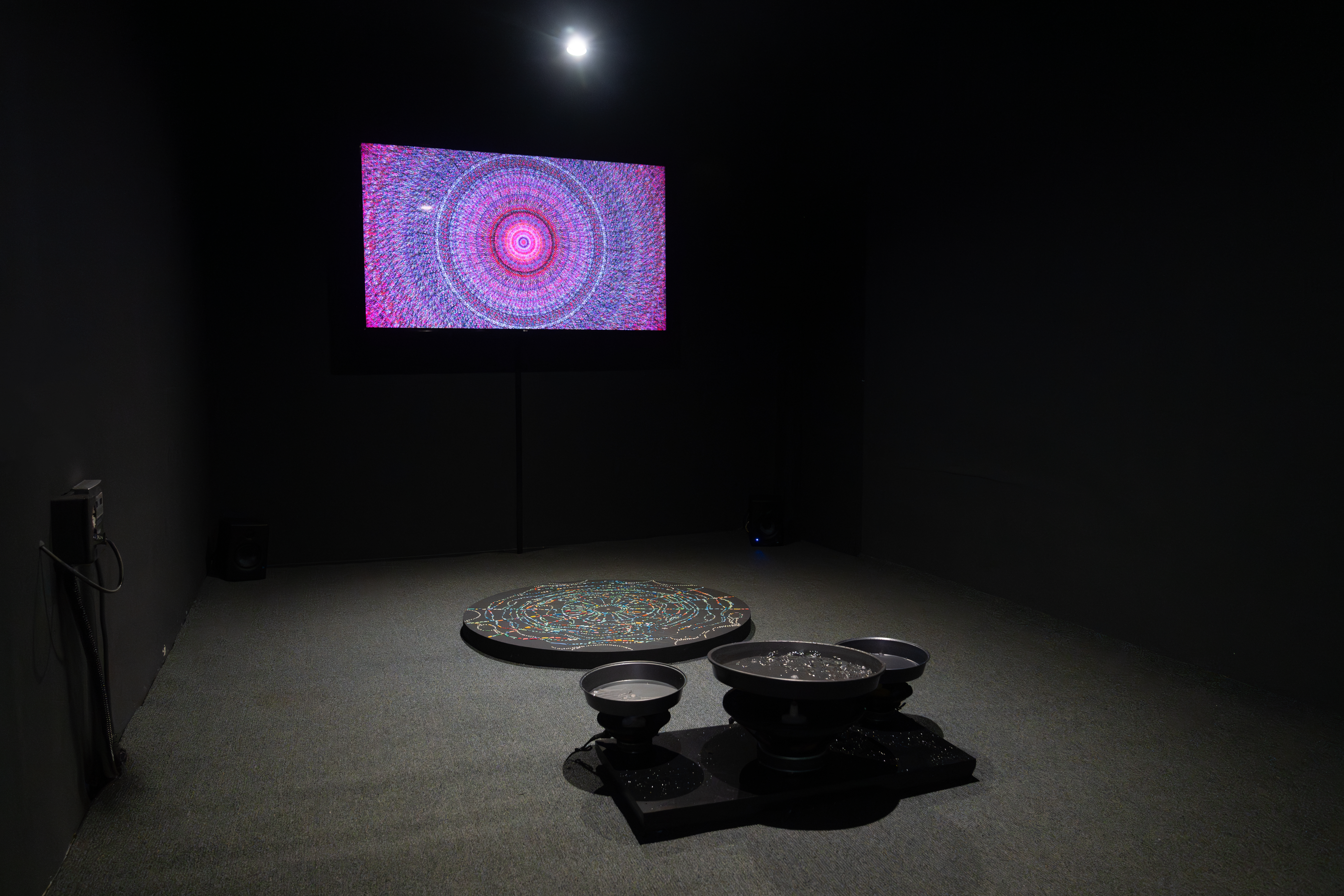
Description
Eunhae Jung and Zune Lee have collaborated on this installation creating mandala patterns from small and micro-ocean plastics generating visualizations of the earth’s frequency.
The plastic fragments have been collected from Hamden beach on Jeju island, in five years of activity collecting ocean plastics with volunteers and members of ECOOROT, an eco-art organization founded by Eunhae Jung. The mandala patterns here are generated using the Schumann Resonance - a series of resonating electromagnetic waves, driven by lightning activity, also known as the Earth’s “heartbeat” or “hum”.
Thunderstorms roll over Earth producing about 50 flashes of lightning per second and creating electromagnetic waves captured between the Earth’s surface and the ionosphere. Some of these waves combine to create a repeating atmospheric heartbeat or the Schumann resonance, an extremely low frequency at an average of 7.83 Hz.
Scientists have discovered that variations in the resonances correspond to changes in the seasons, solar activity, or activity in Earth's magnetic environment and other Earth-bound phenomena. There are theories that the earth’s vibrations are rising which can cause us anxiety, and although there is not hard scientific evidence for this, this theory emphasizes that we are most calm when our brain waves overlaps with the earth’s vibration, so maybe, the Schumann Resonance is a reminder of our connection and close relationship with the Earth.
Eunhae, since her childhood, wondered what this ever-present low sound was, which she was able to hear when everything else was quiet, but recently realized that many people can’t hear it.
Eunhae and the ECOOROT participants kneeling on the sand, stroking it with repetitive moves collecting microplastics while hearing the ocean sounds in the background, become part of a visceral experience that feels like a ritual or prayer. In the mother’s womb, the sound was experienced through tactile receptors. Sound was the touch.
The inspiration of Plastic Mandala came from the Tibetan Buddhist ceremony, where monks create a beautiful and colorful sand mandala for days to weeks, and when it’s complete, they dismantle it. Then they carry the sand, blessed and now blessing itself, and pour it into a nearby stream of water so that it will be flown into the ocean and to all living beings connected through the one ocean that connects us all.
The artwork expresses a sense of despair facing our plastic culture and the wish to bless the ocean by taking plastic out of the ocean. The artwork is complete when it is dismantled. It will not be turned into something new, useful, or permanent.
You can watch a video from a Plastic Mandala made by ECOOROT participants here:
https://www.youtube.com/watch?v=kjd1t9OWC2I&t=302s








